Impotent
1. Concept: The impact of any multiple executions is the same as the impact of one execution.
According to this meaning, the final meaning is that the impact on the database can only be one-time and cannot be processed repeatedly. How to ensure its idempotence, usually the following methods are used:
1: The database establishes a unique index, which can ensure that only one piece of data is finally inserted into the database
2: Token mechanism, each interface request First obtain a token, and then add this token to the header body of the request the next time, and verify it in the background. If the verification passes, delete the token, and judge the token again for the next request
3: Pessimistic lock Or optimistic locking, pessimistic locking can ensure that other sql cannot update data every time for update (when the database engine is innodb, the select condition must be a unique index to prevent the entire table from being locked)
4: First To judge after querying, first check whether the data exists in the database. If it exists, it proves that the request has been made, and the request is directly rejected. If it does not exist, it proves that it is the first time to come in, and it is directly released.
Redis realizes the schematic diagram of automatic idempotence:

1. Build the redis service API
1: First, build the redis server .
2: Introduce the redis stater in springboot, or the jedis encapsulated by Spring. The main api used later is its set method and exists method. Here we use springboot’s encapsulated redisTemplate
The code is as follows:
/*
redis工具类
*/
@Component
public class RedisService {
@Autowired
private RedisTemplate redisTemplate;
/**
* 写入缓存
* @param key
* @param value
* @return
*/
public boolean set(final String key,Object value){
boolean result = false;
try {
ValueOperations<Serializable,Object> operations = redisTemplate.opsForValue();
operations.set(key,value);
result = true;
}catch (Exception e){
result = false;
e.printStackTrace();
}
return result;
}
/**
* 写入缓存有效期
* @return
*/
public boolean setEx(final String key ,Object value,Long expireTime){
boolean result = false;
try {
ValueOperations<Serializable,Object> operations = redisTemplate.opsForValue();
operations.set(key,value);
redisTemplate.expire(key,expireTime, TimeUnit.SECONDS);//有效期
result = true;
}catch (Exception e){
result = false;
e.printStackTrace();
}
return result;
}
/**
* 判断缓存中是否有对应的value
* @param key
* @return
*/
public boolean exists(final String key){
return redisTemplate.hasKey(key);
}
/**
* 读取缓存
* @param key
* @return
*/
public Object get(final String key){
Object obj = null;
ValueOperations<Serializable,Object> operations= redisTemplate.opsForValue();
obj = operations.get(key);
return obj;
}
/**
* 删除对应的value
* @param key
* @return
*/
public boolean remvoe(final String key){
if(exists(key)){
Boolean delete = redisTemplate.delete(key);
return delete;
}
return false;
}
}2. Customize AutoIdempotent
Customize an annotation. The main purpose of defining this annotation is to add it to methods that need to be idempotent. Whenever a certain If the method is annotated, it will be automatically idempotent. If this annotation is scanned using reflection in the background, the method will be processed to achieve automatic idempotence. The meta-annotation ElementType.METHOD is used to indicate that it can only be placed on the method, and etentionPolicy.RUNTIME indicates that it is used during runtime.
package com.yxkj.springboot_redis_interceptor.annotion;
import java.lang.annotation.ElementType;
import java.lang.annotation.Retention;
import java.lang.annotation.RetentionPolicy;
import java.lang.annotation.Target;
@Target(ElementType.METHOD)
@Retention(RetentionPolicy.RUNTIME)
public @interface AutoIdempotent {
}三. Token creation and verification
1.Token service interface
We create a new interface to create a token service. There are mainly two methods, one for creating tokens and one for verifying tokens. Creating a token mainly generates a string. When checking the token, it mainly conveys the request object. Why do we need to pass the request object? The main function is to get the token in the header, and then check it, and get the specific error information through the thrown Exception and return it to the front end
public interface TokenService {
/**
* 创建token
* @return
*/
String createToken();
/**
* 检验token的合法性
* @param request
* @return
* @throws Exception
*/
boolean checkToken(HttpServletRequest request) throws Exception;
}2.Token's service implementation class
token references redis Service, create token, use random algorithm tool class to generate random uuid string, and then put it into redis (in order to prevent redundant retention of data, the expiration time is set here to 10000 seconds, depending on the business), if the put is successful , and finally return this token value. The checkToken method is to get the token from the header to the value (if it cannot be obtained from the header, get it from paramter). If it does not exist, it will throw an exception directly. This exception information can be caught by the interceptor and then returned to the front end.
The above is the detailed content of How springboot implements automatic idempotent interfaces. For more information, please follow other related articles on the PHP Chinese website!
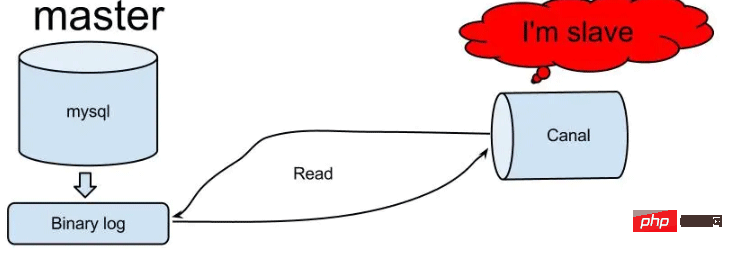 怎么使用SpringBoot+Canal实现数据库实时监控May 10, 2023 pm 06:25 PM
怎么使用SpringBoot+Canal实现数据库实时监控May 10, 2023 pm 06:25 PMCanal工作原理Canal模拟MySQLslave的交互协议,伪装自己为MySQLslave,向MySQLmaster发送dump协议MySQLmaster收到dump请求,开始推送binarylog给slave(也就是Canal)Canal解析binarylog对象(原始为byte流)MySQL打开binlog模式在MySQL配置文件my.cnf设置如下信息:[mysqld]#打开binloglog-bin=mysql-bin#选择ROW(行)模式binlog-format=ROW#配置My
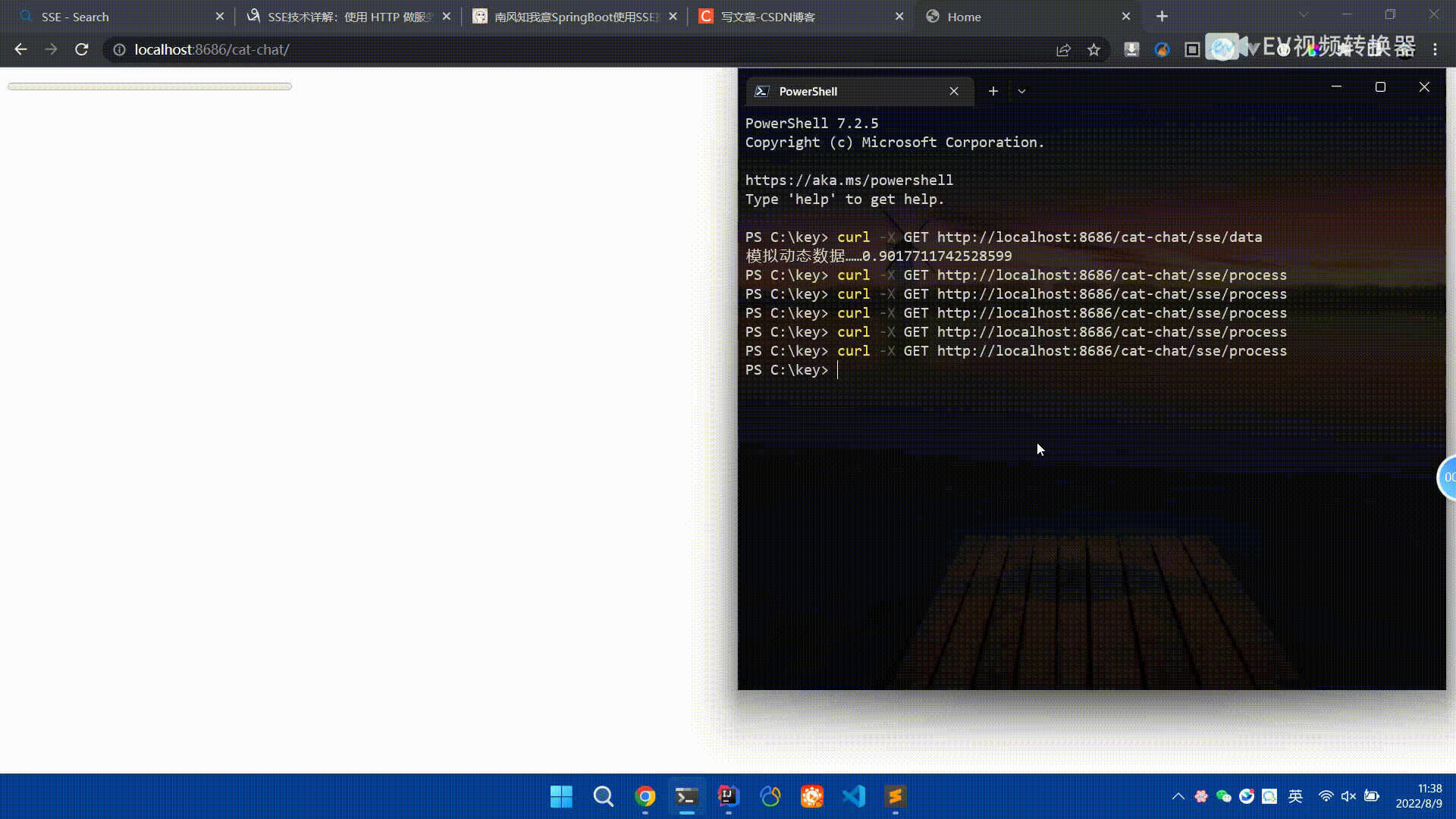 Spring Boot怎么使用SSE方式向前端推送数据May 10, 2023 pm 05:31 PM
Spring Boot怎么使用SSE方式向前端推送数据May 10, 2023 pm 05:31 PM前言SSE简单的来说就是服务器主动向前端推送数据的一种技术,它是单向的,也就是说前端是不能向服务器发送数据的。SSE适用于消息推送,监控等只需要服务器推送数据的场景中,下面是使用SpringBoot来实现一个简单的模拟向前端推动进度数据,前端页面接受后展示进度条。服务端在SpringBoot中使用时需要注意,最好使用SpringWeb提供的SseEmitter这个类来进行操作,我在刚开始时使用网上说的将Content-Type设置为text-stream这种方式发现每次前端每次都会重新创建接。最
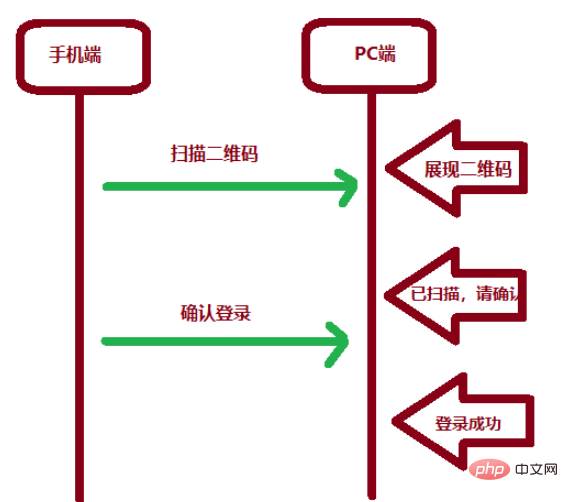 SpringBoot怎么实现二维码扫码登录May 10, 2023 pm 08:25 PM
SpringBoot怎么实现二维码扫码登录May 10, 2023 pm 08:25 PM一、手机扫二维码登录的原理二维码扫码登录是一种基于OAuth3.0协议的授权登录方式。在这种方式下,应用程序不需要获取用户的用户名和密码,只需要获取用户的授权即可。二维码扫码登录主要有以下几个步骤:应用程序生成一个二维码,并将该二维码展示给用户。用户使用扫码工具扫描该二维码,并在授权页面中授权。用户授权后,应用程序会获取一个授权码。应用程序使用该授权码向授权服务器请求访问令牌。授权服务器返回一个访问令牌给应用程序。应用程序使用该访问令牌访问资源服务器。通过以上步骤,二维码扫码登录可以实现用户的快
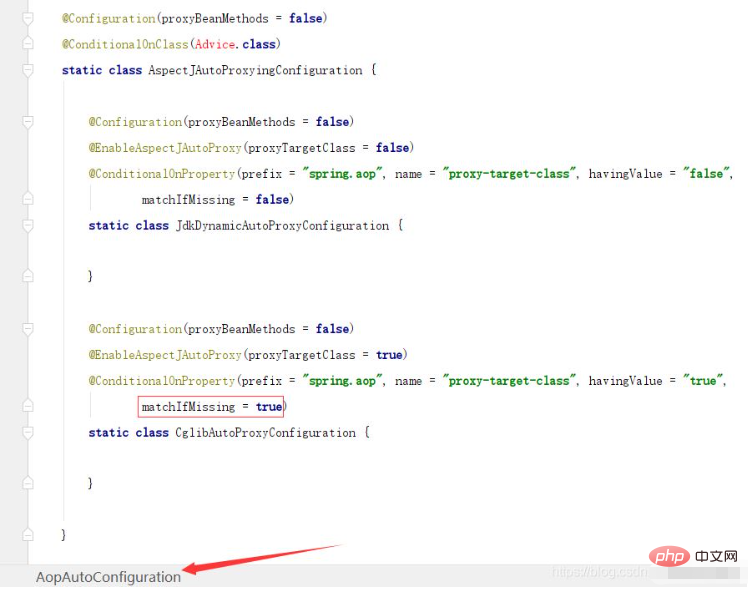 SpringBoot/Spring AOP默认动态代理方式是什么May 10, 2023 pm 03:52 PM
SpringBoot/Spring AOP默认动态代理方式是什么May 10, 2023 pm 03:52 PM1.springboot2.x及以上版本在SpringBoot2.xAOP中会默认使用Cglib来实现,但是Spring5中默认还是使用jdk动态代理。SpringAOP默认使用JDK动态代理,如果对象没有实现接口,则使用CGLIB代理。当然,也可以强制使用CGLIB代理。在SpringBoot中,通过AopAutoConfiguration来自动装配AOP.2.Springboot1.xSpringboot1.xAOP默认还是使用JDK动态代理的3.SpringBoot2.x为何默认使用Cgl
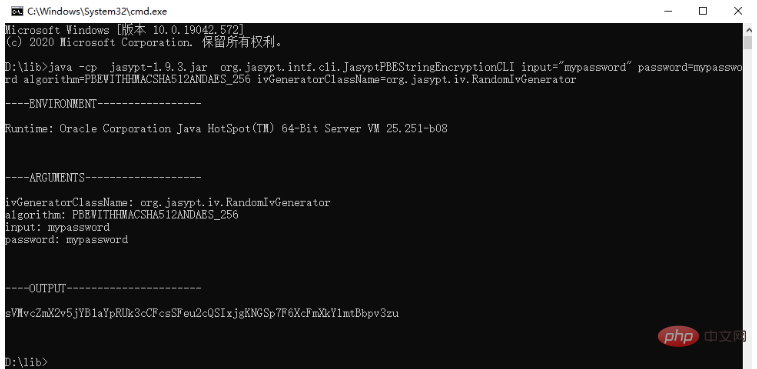 spring boot怎么对敏感信息进行加解密May 10, 2023 pm 02:46 PM
spring boot怎么对敏感信息进行加解密May 10, 2023 pm 02:46 PM我们使用jasypt最新版本对敏感信息进行加解密。1.在项目pom文件中加入如下依赖:com.github.ulisesbocchiojasypt-spring-boot-starter3.0.32.创建加解密公用类:packagecom.myproject.common.utils;importorg.jasypt.encryption.pbe.PooledPBEStringEncryptor;importorg.jasypt.encryption.pbe.config.SimpleStrin
 使用Java SpringBoot集成POI实现Word文档导出Apr 21, 2023 pm 12:19 PM
使用Java SpringBoot集成POI实现Word文档导出Apr 21, 2023 pm 12:19 PM知识准备需要理解ApachePOI遵循的标准(OfficeOpenXML(OOXML)标准和微软的OLE2复合文档格式(OLE2)),这将对应着API的依赖包。什么是POIApachePOI是用Java编写的免费开源的跨平台的JavaAPI,ApachePOI提供API给Java程序对MicrosoftOffice格式档案读和写的功能。POI为“PoorObfuscationImplementation”的首字母缩写,意为“简洁版的模糊实现”。ApachePOI是创建和维护操作各种符合Offic
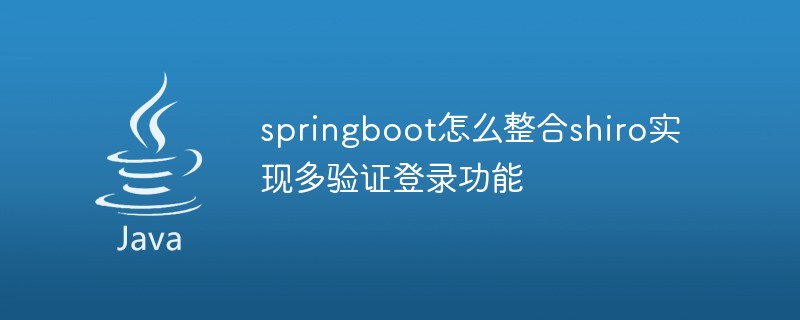 springboot怎么整合shiro实现多验证登录功能May 10, 2023 pm 04:19 PM
springboot怎么整合shiro实现多验证登录功能May 10, 2023 pm 04:19 PM1.首先新建一个shiroConfigshiro的配置类,代码如下:@ConfigurationpublicclassSpringShiroConfig{/***@paramrealms这儿使用接口集合是为了实现多验证登录时使用的*@return*/@BeanpublicSecurityManagersecurityManager(Collectionrealms){DefaultWebSecurityManagersManager=newDefaultWebSecurityManager();
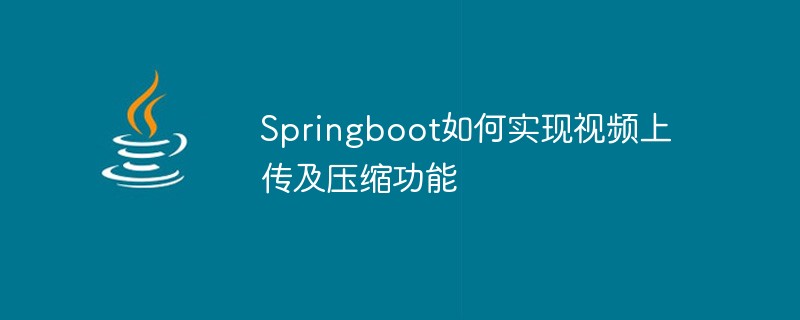 Springboot如何实现视频上传及压缩功能May 10, 2023 pm 05:16 PM
Springboot如何实现视频上传及压缩功能May 10, 2023 pm 05:16 PM一、定义视频上传请求接口publicAjaxResultvideoUploadFile(MultipartFilefile){try{if(null==file||file.isEmpty()){returnAjaxResult.error("文件为空");}StringossFilePrefix=StringUtils.genUUID();StringfileName=ossFilePrefix+"-"+file.getOriginalFilename(


Hot AI Tools

Undresser.AI Undress
AI-powered app for creating realistic nude photos

AI Clothes Remover
Online AI tool for removing clothes from photos.

Undress AI Tool
Undress images for free

Clothoff.io
AI clothes remover

AI Hentai Generator
Generate AI Hentai for free.

Hot Article

Hot Tools

SAP NetWeaver Server Adapter for Eclipse
Integrate Eclipse with SAP NetWeaver application server.

Dreamweaver Mac version
Visual web development tools

ZendStudio 13.5.1 Mac
Powerful PHP integrated development environment

Atom editor mac version download
The most popular open source editor

SublimeText3 Linux new version
SublimeText3 Linux latest version







